Marine Life & Conservation
Glasgow Uni students research under the Red Sea at Roots
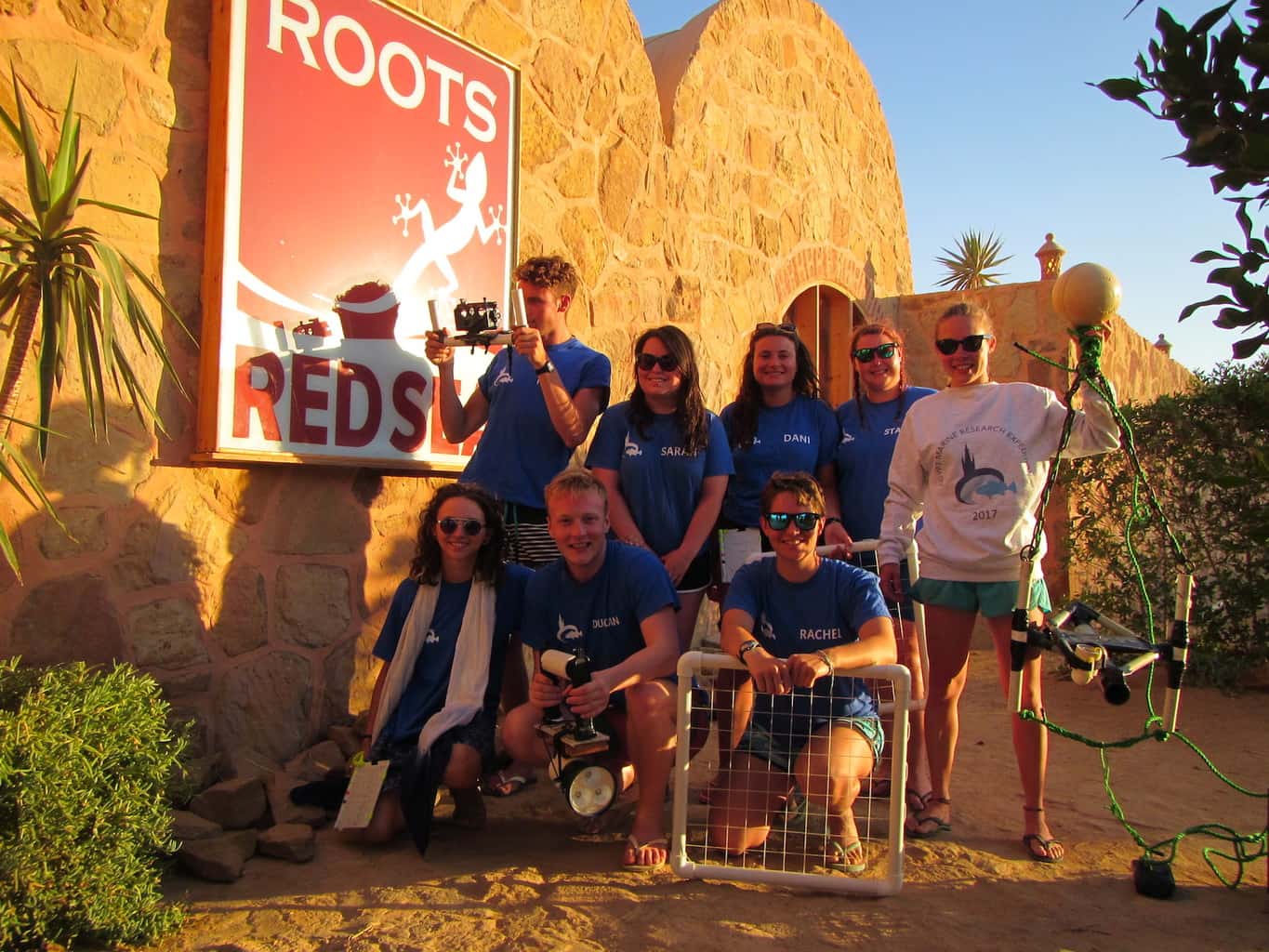
Our new blogger, Guy Henderson, reports on this summer’s undergraduate research expedition at the Open Ocean Science Centre at Roots Camp, El Quseir, Egypt…
June and July are busy months for science at Roots Camp and Pharaoh Dive Club El Quseir. This is when the annual University of Glasgow marine research expedition is based on site at the Open Ocean Science Centre. The students will be here until the end of July undertaking fieldwork for dissertations and doing data analysis in the purpose built marine lab. The team consists of eight members painstakingly selected way back in October. They have spent the last 8 months designing projects, applying for grants, fundraising and honing their diving skills. There is a good range of experience within the team with one first year, two second years, a fourth year (recently graduated) and four third year honours students. The third years will be collecting data for their dissertations and each have been assigned a buddy from the remaining team members to help with data collection.
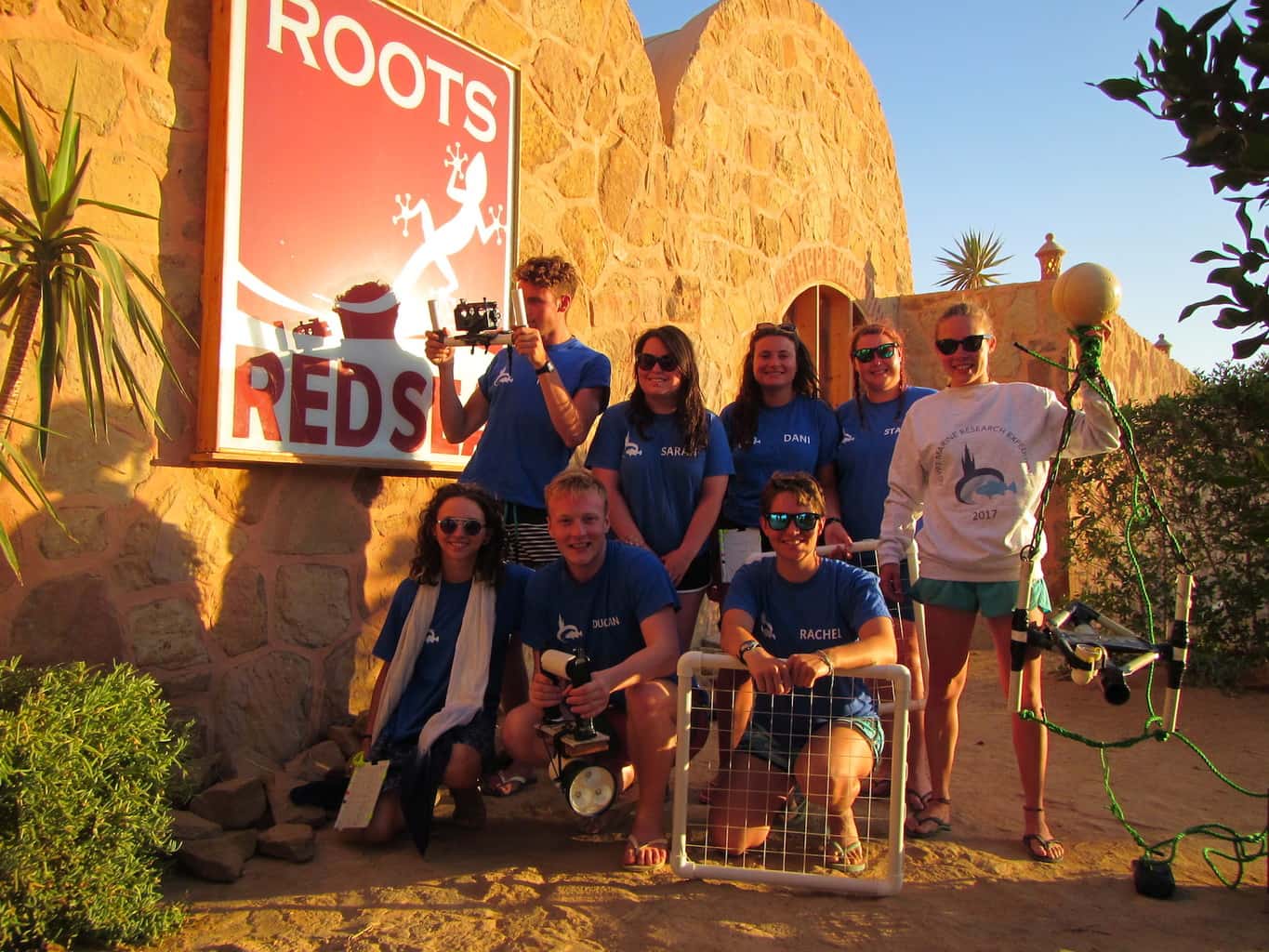
GU Egypt Marine Expedition 2017: Left to Right, Back to Front – Max, Sarah, Dani, Stacey, Bella, Clara, Duncan & Rachel
Pilot studies and equipment familiarisation went without a hitch and the projects are all well underway with a substantial amount of data already collected. Below we will introduce the individual project methodologies and scientific relevance. We have two diving projects which are undertaken by members with diving qualifications at rescue level or higher, a shore based project on the reef flat and a rather exciting camera drop project which makes use of the speedboat.
Bella & Sarah – Camera drops in the mesophotic zone
Bella is investigating arguably the most mysterious of reef habitats; Mesophotic Coral Ecosystems (MCEs). Ranging in depths from 30 to 150 metres, MCEs receive enough light penetrating the surface waters for vibrant life but are generally too deep for traditional scuba diving techniques so are vastly understudied in comparison to shallow reefs. Round the globe there are gaps in our knowledge but particularly in the Red Sea, where the diverse marine life has yet to be fully charted on the map of scientific research.
Bella is using an innovative technique to capture footage of fish at varying depths within the MCE range. She is doing this by dropping a 3D camera off an RIB at GPS marked co-ordinates, 75-degree bearings from the shore, at depth level increments of roughly 10 metres. The footage will be used to identify and count all the fish found at each depth level as well as measure their biomass using EventMeasure software. Guy and her have been working hard on the construction of an intricate rig structure to protect the camera in the water, which will be essential to the effective success of the drops.
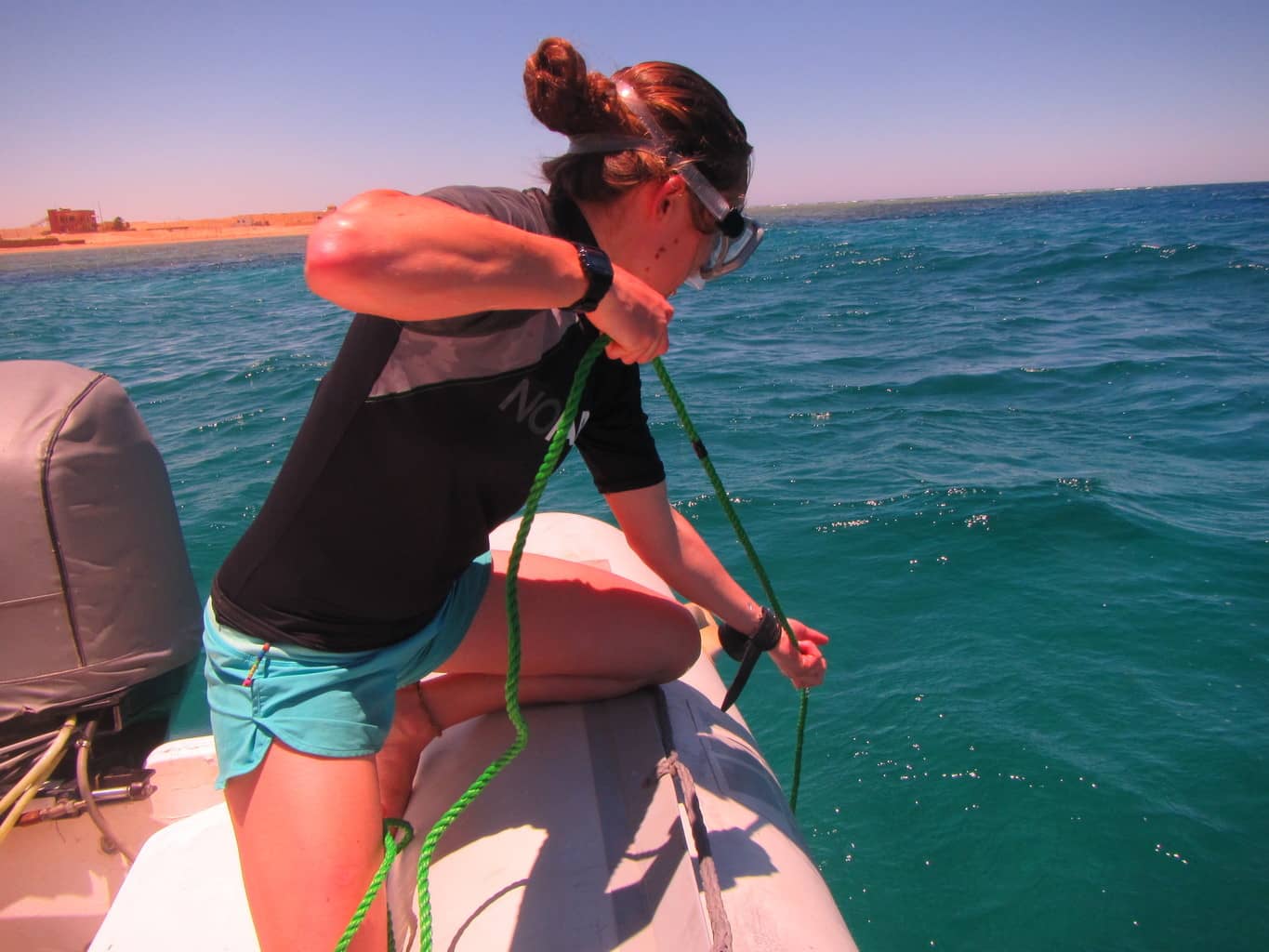
Bella deploying her 3D drop camera rig at Ras Quseir
Duncan & Rachel – Coral cover and light intensity
Duncan will be quantifying the effect of Photosynthetically active radiation (PAR) on the community structure of scleratinian (Hard) corals on the Abu Sautir reef. Understanding the impact differing PAR levels have on coral abundance and diversity will indicate the importance of light as an abiotic driver of coral community composition. Coupled with the lack of research and relevant literature in the Red Sea, Duncan’s study will provide valuable data relating to coral cover of a highly diverse yet relatively understudied Red Sea fringing reef.

Duncan filming a video transect with a custom camera mount
Clara & Stacey – Reef flat, rock pool diversity
Clara is investigating how factors such as distance from the shore, pH and salinity affect species diversity within the rock-pools in Abu Sautir. This is done by creating transects on the shore and using quadrat sampling to determine the species diversity and abundance. Rock-pools are found in intertidal habitats which may be extreme environments for inhabiting organisms; this is due to tidal changes, rough wave action and fluctuating water parameters. Some organisms have physiological coping mechanisms that help them survive the fluctuation in these conditions, such as starfish which can regulate their salt uptake. However those that are less well adapted to these variable conditions may not be found across the entire range of rock-pools, therefore it will be interesting to discover how the various species are distributed across the reef flat.
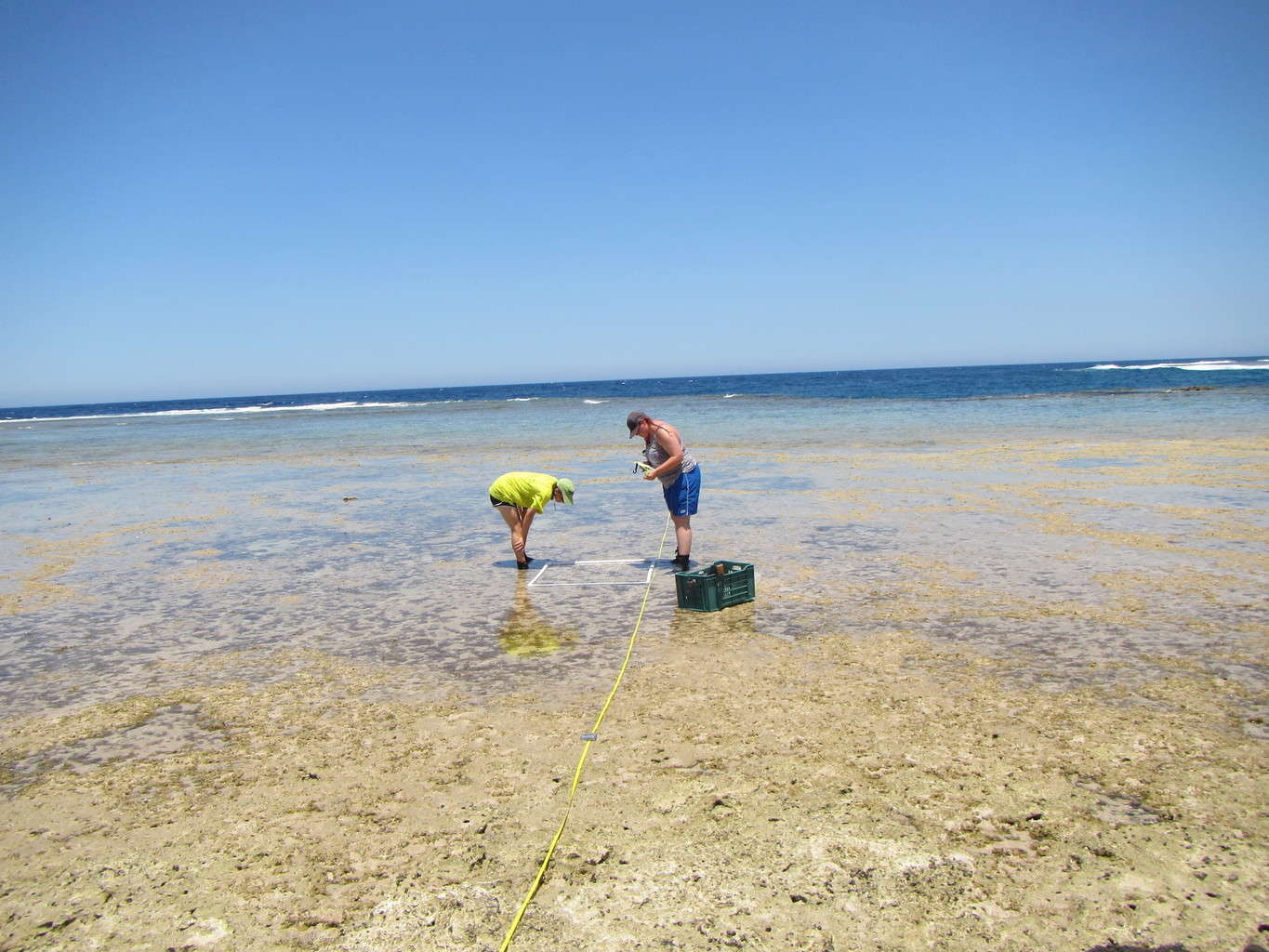
Clara and Stacey surveying a quadrat on the house reef Abu Sautir
Max & Dani – Hawkfish behaviour study
Max will be working on our longest running project by supplementing a 3 year data set. The hawkfish behaviour study aims to look at bold-shy behaviour of freckled hawkfish (Paracirrhites forsteri) in relation to mortality rates from year to year. Using 3D camera technology and photo identification software, the relative boldness of individual fish can be found and calculated by means of a simulated predator prey interaction. Animal behavioural studies are usually limited to lab settings with controlled conditions; this project is exciting as it allows us to look at the behaviour of fish in their natural habitats while investigating traits that may contribute to the evolution of populations.
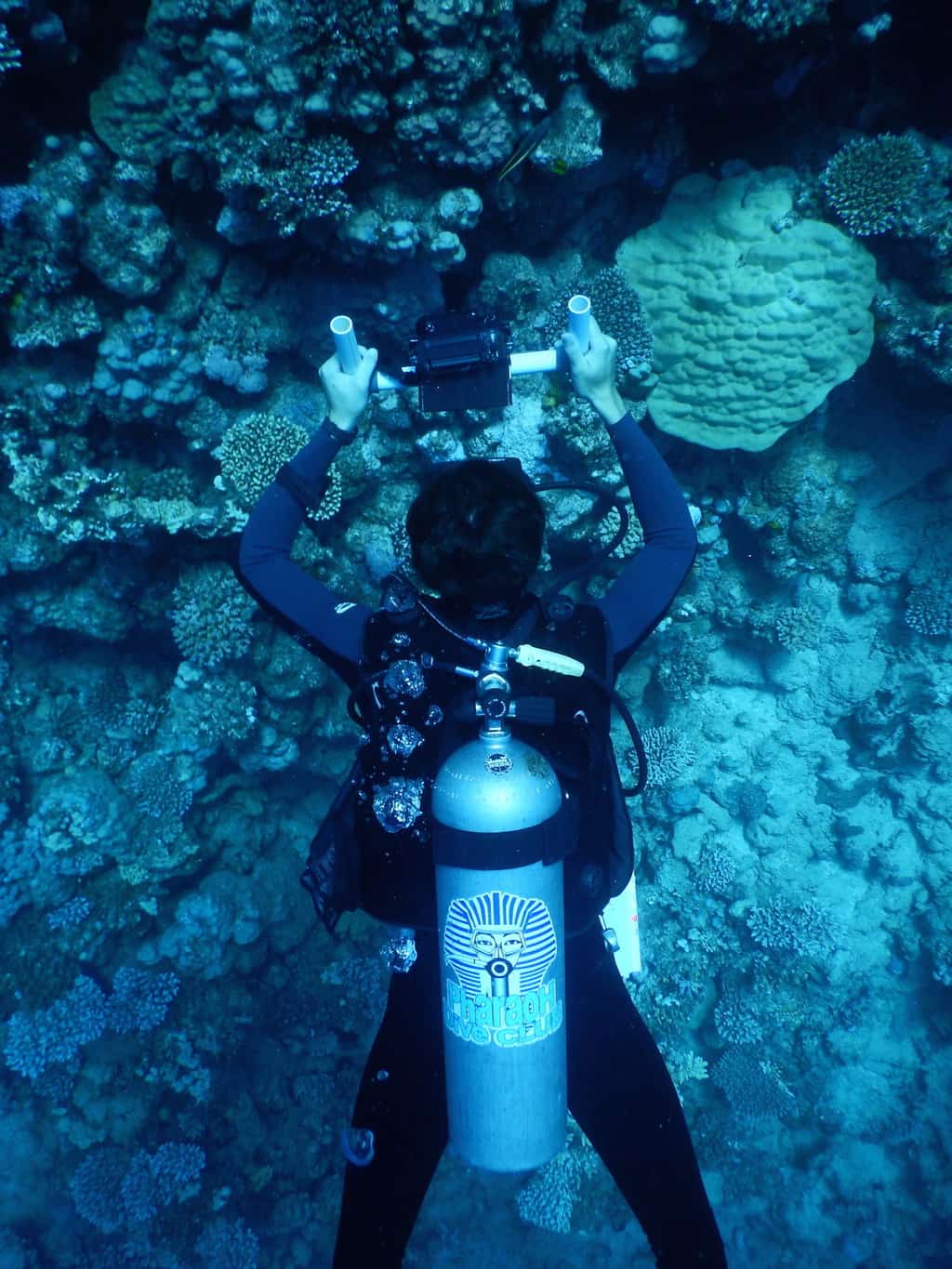
Max ‘scaring’ a freckled hawkfish and recording the outcome in 3D
Aside from the Student expedition we have a number of volunteers with us throughout the summer months. The volunteers work closely with the local community organising clean up dives, beach and mangrove clean ups and educational outreach programmes with local schools and youth groups.
In the next instalment of this blog we will catch up with the volunteers and the students to see what they have been getting up to as well as checking on how the projects are progressing.
Follow the expedition Facebook page at www.facebook.com/GUEgypt2013/ or on twitter @guegypt
You can also visit: www.openoceanproject.org, www.rootsredsea.com and www.pharaohdiveclub.co.uk
Blogs
The Ocean Cleanup Breaks 10,000,000 KG Barrier

The Ocean Cleanup, the global non-profit project, has removed a verified all-time total of ten million kilograms (22 million lbs.) of trash from oceans and rivers around the world – approximately the same weight as the Eiffel Tower.
To complete its mission of ridding the oceans of plastic, The Ocean Cleanup uses a dual strategy: cleaning up the Great Pacific Garbage Patch (GPGP) to remove the plastic already afloat in the oceans, while stopping the flow of plastic from the world’s most polluting rivers.
Through cleaning operations in the GPGP and in rivers in eight countries, the cumulative total of trash removed has now surpassed ten million kilograms. This milestone demonstrates the acceleration of The Ocean Cleanup’s impact, while underlining the astonishing scale of the plastic pollution problem and the need for continued support and action.
While encouraging for the mission, this milestone is only a staging point: millions more tons of plastic still pollute our oceans and The Ocean Cleanup intends to continue learning, improving and innovating to solve this global catastrophe.
This announcement comes as governments from around the world meet to continue negotiations to develop a new legally binding instrument to end plastic pollution at INC4 in Ottawa, Canada. Representatives of The Ocean Cleanup will be in attendance and the organization will be urging decision-makers to collaborate towards a comprehensive and ambitious global treaty which addresses plastic at all stages of its life cycle and in all marine environments worldwide, including in areas beyond national jurisdiction.
It is encouraging to see that the need for remediation is reflected in the various options for potential treaty provisions. It is essential that the final treaty contains clear targets for the remediation of legacy plastic pollution, and reduction of riverine plastic emissions.
Tackling plastic pollution requires innovative and impactful solutions. The treaty should therefore incentivize the innovation ecosystem by fostering innovations that make maximal use of data, technology and scientific knowledge – such as those designed and deployed by The Ocean Cleanup.
‘After many tough years of trial and error, it’s amazing to see our work is starting to pay off – and I am proud of the team who has brought us to this point.’ said Boyan Slat, Founder and CEO of The Ocean Cleanup. ‘While we still have a long way to go, our recent successes fill us with renewed confidence that the oceans can be cleaned.’
The Ocean Cleanup was founded in 2013 and captured its first plastic in 2019, with the first confirmed catch in the GPGP coming soon after the deployment of Interceptor 001 in Jakarta, Indonesia. After surpassing one million kilograms of trash removed in early 2022, the non-profit project has since progressed to the third iteration of its GPGP cleaning solution, known as System 03, and a network of Interceptors currently covering rivers in eight countries, with more deployments set for 2024.
About The Ocean Cleanup
The Ocean Cleanup is an international non-profit organization that develops and scales technologies to rid the world’s oceans of plastic. They aim to achieve this goal through a dual strategy: stemming the inflow via rivers and cleaning up the legacy plastic that has already accumulated in the ocean. For the latter, The Ocean Cleanup develops large-scale systems to efficiently concentrate the plastic for periodic removal. This plastic is tracked and traced through DNV’s chain of custody model to certify claims of origin when recycling it into new products. To curb the tide via rivers, The Ocean Cleanup has developed Interceptor™ solutions to halt and extract riverine plastic before it reaches the ocean. Founded in 2013 by Boyan Slat, The Ocean Cleanup now employs a broadly multi-disciplined team of approximately 140. The foundation is headquartered in Rotterdam, the Netherlands.
For more information, visit: theoceancleanup.com and follow @theoceancleanup on social media.
Marine Life & Conservation
Steve Backshall to headline Shark Trust’s flagship event: For the Love of Sharks

Join a host of amazing, shark loving, speakers including Steve Backshall and the Shark Trust team for an evening celebrating shark conservation at the Royal Geographical Society in London this November.
Date: 29th November 2024
Time: 6-10pm
Location: Royal Geographical Society, London
Tickets: https://www.sharktrust.org/Event/flos24
The event will be a celebration of all things shark. Those lucky enough to get hold of tickets will hear from engaging guest speakers with a passion for sharks.
The line-up includes (*subject to change if unforeseen circumstances arise)
Steve Backshall: One of television’s busiest presenters, BAFTA award-winning wildlife expert Steve has been passionate about the wild world ever since he was young.
Steve’s impressive TV career has taken him all around the world, investigating a wide array of species and environments. Steve has filmed over 100 hours of children’s wildlife programmes with the BAFTA award winning Deadly 60 franchise and recently, with Sky Nature, for his new series ‘Whale with Steve Backshall’. He has been a patron for the Shark Trust for 10 years.
Simon Rogerson: is a photojournalist specialising in natural history, diving and the sea.
He is editor of SCUBA magazine, the official journal of the British Sub-Aqua Club. Simon started his career as a crime reporter but gravitated towards his ‘less depressing’ interest in underwater exploration, joining the staff of DIVE magazine in 1999. In 2005 he was named ‘Editor of the Year’ in the PPA’s Independent Publishing Awards. Simon also works as a freelance writer, contributing frequently to the Sunday Times and Telegraph, in addition to BBC Wildlife, Esquire, and a host of international diving magazines. He is the author of a book, Dive Red Sea, published by Ultimate Sports. Now based in Berkshire, Simon has been a Patron of the Shark Trust for 20 years.
More speakers to be announced soon. Head to the Shark Trust website to learn more.
The evening will also allow guests the final chance to see the Oceanic 31, shark art exhibition. Some of the artwork will be auctioned/raffled at the event, while the rest will be auctioned online to raise money for the Shark Trust Oceanic Programme.
For the Love of Sharks is an evening with something for everyone who is interested and fascinated by sharks. Join the Shark Trust, their Patrons, Trustees and Staff, along with a host of supporters for this celebration of shark conservation.
For more information or to buy a ticket: https://www.sharktrust.org/Event/flos24
-

 News3 months ago
News3 months agoCapturing Critters in Lembeh Underwater Photography Workshop 2024: Event Roundup
-

 Marine Life & Conservation Blogs3 months ago
Marine Life & Conservation Blogs3 months agoCreature Feature: Swell Sharks
-

 Blogs2 months ago
Blogs2 months agoMurex Resorts: Passport to Paradise!
-

 Gear Reviews3 weeks ago
Gear Reviews3 weeks agoGEAR REVIEW – Revolutionising Diving Comfort: The Sharkskin T2 Chillproof Suit
-

 Blogs3 months ago
Blogs3 months agoDiver Discovering Whale Skeletons Beneath Ice Judged World’s Best Underwater Photograph
-

 News2 months ago
News2 months agoPADI Teams Up with Wellness Brand Neuro to Drive Ocean Change and Create a Blue State of Mind
-

 Gear Reviews3 months ago
Gear Reviews3 months agoGear Review: Oceanic+ Dive Housing for iPhone
-

 News3 months ago
News3 months agoWorld’s Best Underwater Photographers Unveil Breathtaking Images at World Shootout 2023

















